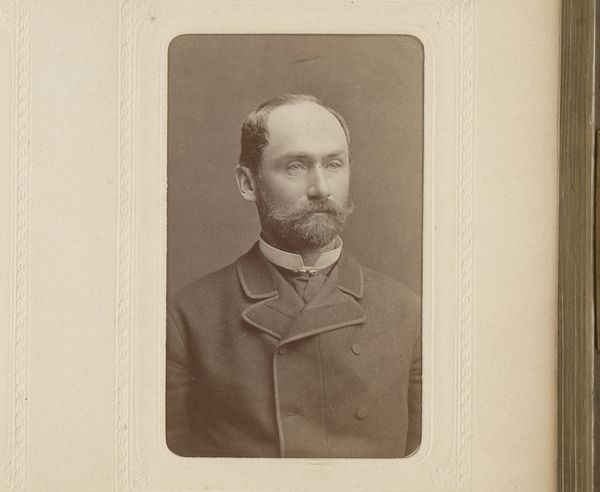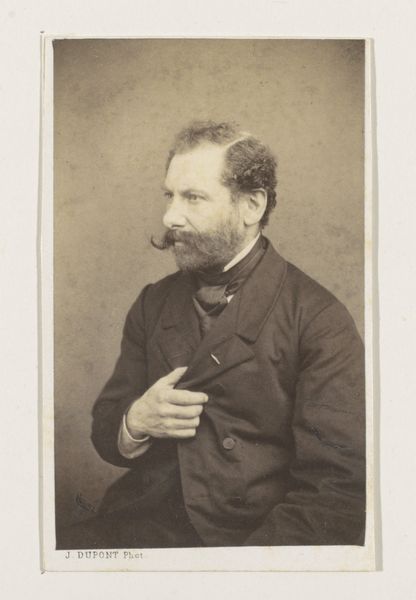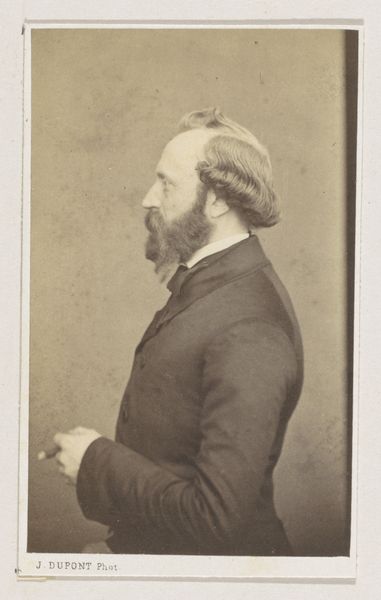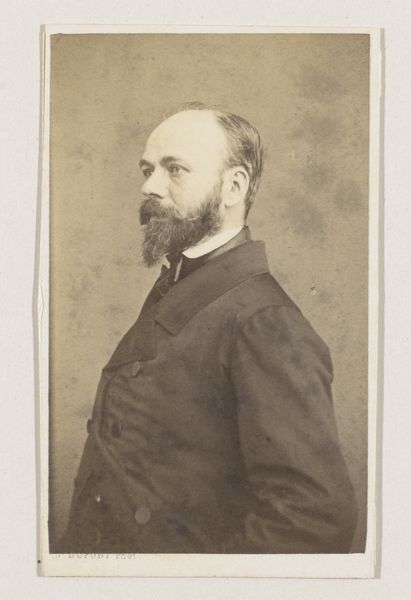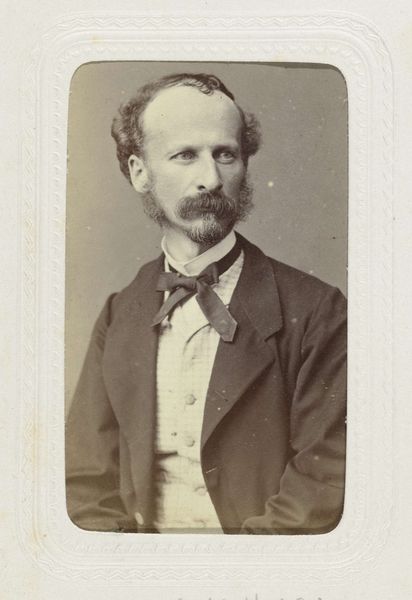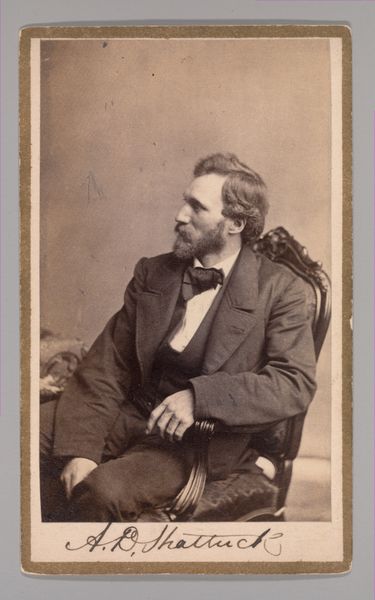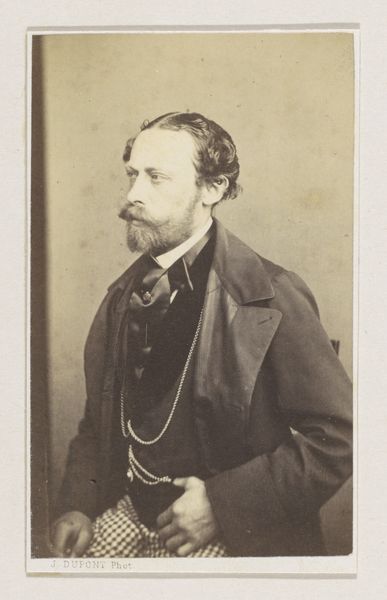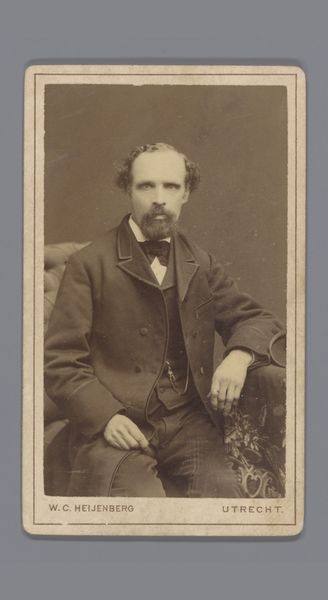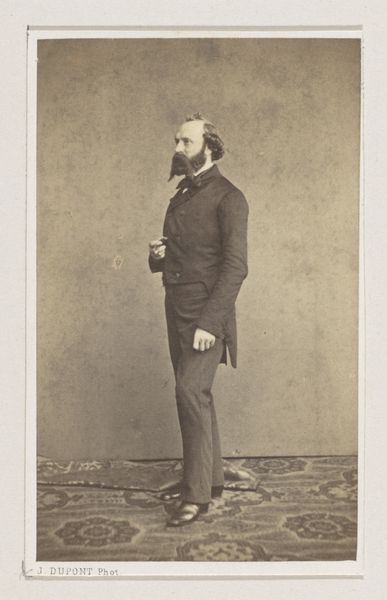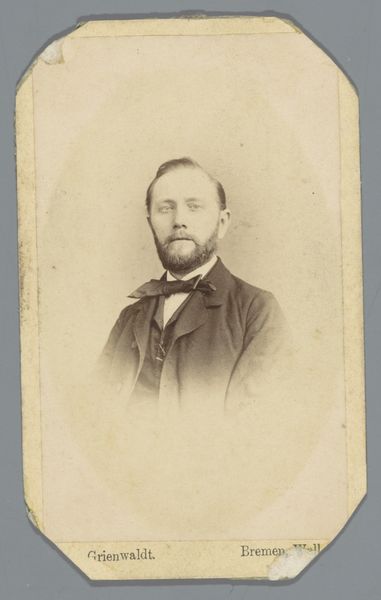
photography, gelatin-silver-print
#
portrait
#
photography
#
historical photography
#
gelatin-silver-print
#
realism
Dimensions: height 101 mm, width 62 mm
Copyright: Rijks Museum: Open Domain
This is a photographic portrait of the painter Lodewijk Jan de Taeye, made by Joseph Dupont sometime in the mid-19th century. Photography had a huge impact on the art world. It democratized image-making, but also put pressure on painters to prove they could offer something cameras could not. The image is small but contains incredible details, like the texture of the sitter's coat and the glint in his eye. This was achieved by the wet collodion process, which involved coating a glass plate with chemicals, exposing it in the camera while still wet, and then developing it immediately. It was painstaking, but it allowed for very sharp images. Dupont was not just making a picture, but also participating in a new kind of labor. He became a chronicler of modern life, using industrial methods to record the likenesses of individuals like Lodewijk Jan de Taeye, thus blurring the boundaries of art and craft.
Comments
No comments
Be the first to comment and join the conversation on the ultimate creative platform.
